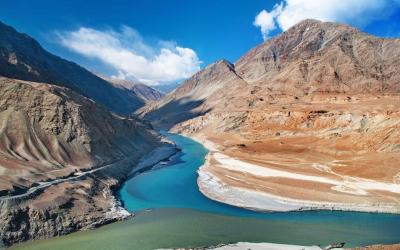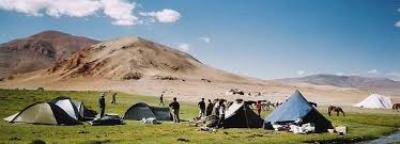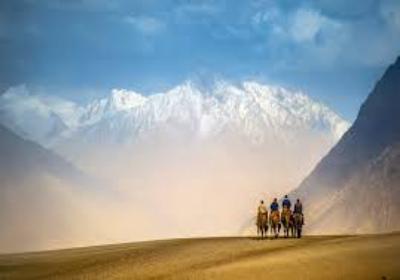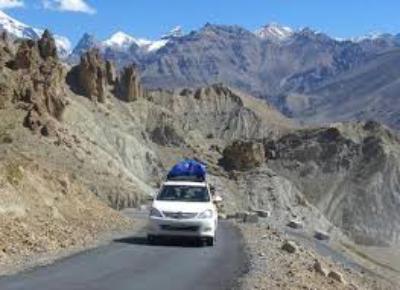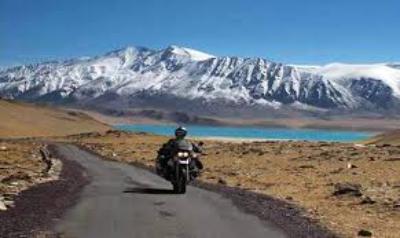Which Side Of Ladakh Is More Beautiful?
In the eastern part of Ladakh lies Leh, the main town and cultural hub of the region. Leh is known for its rich Tibetan Buddhist heritage, ancient monasteries, and traditional Ladakhi hospitality.
1. Leh Palace:
Standing as a magnificent relic of the bygone era, Leh Palace offers panoramic views of the town and the surrounding mountains. This majestic nine-story high structure is reminiscent of the famous Potala Palace in Lhasa, Tibet.
2. Shanti Stupa:
Perched atop a hill, the white-domed Shanti Stupa is a symbol of peace and tranquility. Watching the sunrise or sunset from this vantage point is an unforgettable experience.
3. Thiksey Monastery:
This awe-inspiring monastery is one of the largest and most architecturally impressive in Ladakh. The morning prayers, accompanied by the chanting of monks, create a serene and spiritual atmosphere.
4. Nubra Valley:
Located on the northern side of Leh, the Nubra Valley is a desert-like landscape offering expansive views of sand dunes and lush green oasis villages. The journey to Nubra, via the world's highest motorable road, Khardung La Pass, is an adventure in itself.
5. Pangong Lake:
Famous for its mesmerizing shades of blue, Pangong Lake is a must-visit destination in Leh. The changing colors of the lake throughout the day are a sight to behold, and camping near its pristine shores offers a magical experience.
Kargil: The Rugged Beauty of the WestOn the western side of Ladakh lies Kargil, a region renowned for its rugged landscapes, ancient rock carvings, and historical significance.
1. Mulbekh Monastery:
Showcasing the unique blend of Tibetan and Kashmiri architecture, Mulbekh Monastery is famous for its 9-meter tall rock-carved statue of Maitreya Buddha. The ancient rock carvings nearby are an additional highlight.
2. Drass Valley:
Known as the 'Gateway to Ladakh', Drass Valley is considered one of the coldest inhabited places in the world. The stark beauty of this region, coupled with its historical importance as the site of the Kargil War, leaves a lasting impression on visitors.
3. Suru Valley:
A paradise for nature lovers, Suru Valley is renowned for its lush green meadows, glistening glaciers, and snow-capped peaks. The Suru River flowing through the valley adds to its charm.
4. Zanskar Valley:
Accessible only during the summer months via the high-altitude Zanskar River, this valley is a haven for adventure enthusiasts. The frozen river trek, known as the 'Chadar Trek', attracts thrill-seekers from around the world.
5. Rangdum Monastery:
Situated at an altitude of 4,031 meters, Rangdum Monastery offers breathtaking views of the surrounding mountains. Its isolated location adds to its appeal, making it a hidden gem in the region.
Conclusion: After exploring both sides of Ladakh, it becomes evident that beauty lies in the eyes of the beholder. While Leh captivates with its rich cultural heritage, majestic palaces, and serene monasteries, Kargil mesmerizes with its rugged landscapes and historical significance. Each side of Ladakh offers its own distinct charm and is equally beautiful in its unique way. Whether you choose to explore Leh or Kargil, Ladakh will undoubtedly leave you spellbound, immersing you in its captivating landscapes and spiritual aura. Remember to carry your camera, an open heart, and a sense of adventure when you embark on your journey through the enchanting landscapes of Ladakh. Share this blog post with fellow travelers and nature enthusiasts, and let them decide which side of Ladakh they find more beautiful! Happy travels!Disclaimer : The information provided in this blog is for general informational purposes only. While we strive to keep the content accurate and updated, TravelSetu assumes no liability for errors or omissions. If you believe any part of this blog infringes your rights or causes concern, please notify us immediately at info[at]travelsetu[dot]com so that appropriate action can be taken.
